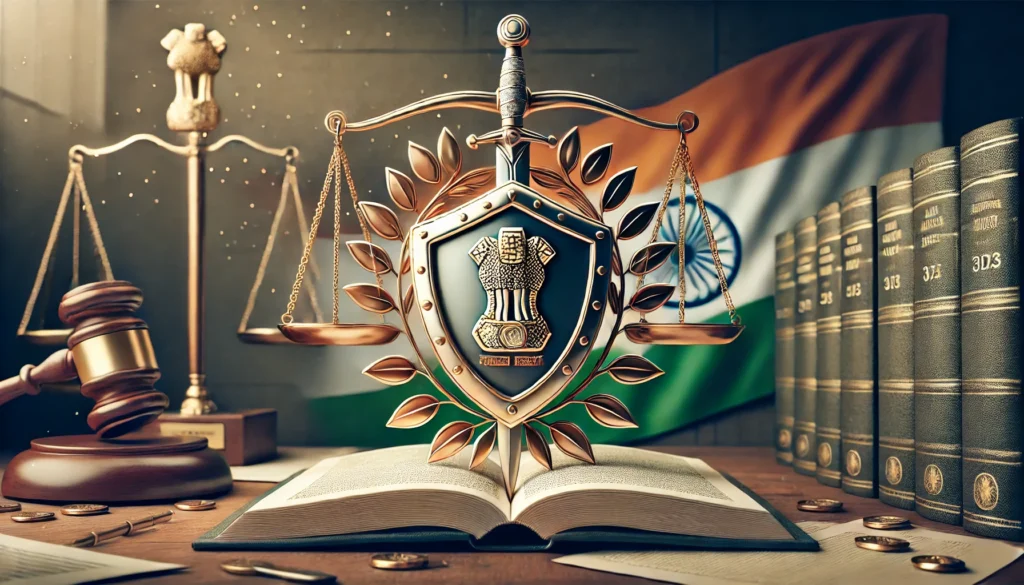Published On: 10 October, 2023
EUTHANASIA AND END-OF-LIFE CARE LAWS
INTRODUCTION
Every individual has the right to have their own life and liberty to live freely. It is based on the idea that a man ought to have the freedom to live his life as he sees fit. Most often, euthanasia is associated with people who are suffering from a fatal illness or who are on the verge of being paralyzed and have no desire to continue living. A severely disabled or near-death person should have the option of choosing whether to live or die. The goal is to end the person’s suffering and intolerable agony while ensuring that they die with dignity. Being freed from ongoing pain and suffering is in the patient’s best interest.
Euthanasia is confined to murdering people who have been in a persistent vegetative condition for an extended period, and it can only be performed by doctors with the patient’s or their kin’s approval. Another crucial component of euthanasia is ‘Good Intention’- there must be a desire to die, and the desire must be a humane death with no personal gain other than putting an end to excruciating suffering and misery. Patients should have the right to terminate their lives through suicide with the help of a doctor if they have a terminal illness or an incurable sickness.
SUICIDE V/S EUTHANASIA
There is the existence of a long debate about a person having the right to life may also have the right to die. Different people have different opinions on the same but some argue to allow euthanasia as people to die with dignity. While some contend that when God gives us life, he is the one to determine when to take life and that we, as humans, have no right to decide on our death, others claim that it relieves them of their unending illness.
Suicide is a criminal offense under the Indian Penal Code, as it has negative effects on the moral values of society. Meanwhile, Euthanasia is the concept of taking the life of a person by his own choice for a valid medical reason. However, it is neither been mentioned in the laws of India nor been recognized by other members of the society. It is significant to note in this context that there is a distinction between “Suicide” and “Euthanasia”. Suicide is an act that purposefully aids another person in committing suicide. Euthanasia, on the other hand, can be either active—such as when a doctor administers a lethal injection—or passive—such as when a doctor turns off the patient’s life support—such as when they are put to sleep.
EUTHANASIA MAY BE CLASSIFIED INTO TWO WAYS:
- based on the act being done:
- Active Euthanasia- ‘Positive Euthanasia’ or ‘Aggressive Euthanasia’ are other names for it. It alludes to directly interfering with another person’s life to kill them. It is a proactive move made to stop a pointless existence and life, for instance, by administering a deadly dosage of medicine or a lethal injection. All kinds of active euthanasia are illegal and are often a speedier approach to cause death.
- Passive Euthanasia- ‘Negative Euthanasia’ or ‘Non-Aggressive Euthanasia’ are other names for it. It is deliberately causing death by failing to offer rudimentary, routine care, food, and drink. It recommends discontinuing, removing, or removing artificial life support. In general, slower and more uncomfortable than forceful euthanasia is passive euthanasia. Euthanasia that is done voluntarily, passively, infrequently, involuntarily, or passively, is lawful in most cases.
- based on Consent which are:
- Voluntary- The choice to end one’s life, which is filled with unceasing and incurable misery, is one that the individual decides for themselves. It covers situations where the patient intentionally declines medical care, won’t take food or liquids, or won’t even accept continued life support.
- Non-Voluntary- Ending a person’s life when that person lacks the mental capacity to make a conscious decision to die, such as a patient in a coma. In non-voluntary euthanasia, the patient has not provided any advance directives or written a living will because he may not have had the chance to do so or may not have foreseen any such accident or circumstance. The decision to perform non-voluntary euthanasia is frequently made by the patient’s family.
EUTHANASIA AS A NECESSITY IN IPC
The act of euthanasia has an absence of malafide criminal intention as it is done in good faith. A patient’s great suffering can do more harm to him by making him struggle for his life rather than allowing him to pass away peacefully and with dignity. This is because patients who remain hospitalized fight for their lives but demand to pass away. Section 81[1] of the IPC states, that an offense is not committed knowingly to cause harm, without criminal intent, and in good faith to prevent or avoid harm to another person, but the said code does not allow the mercy killing to any person. The Constitution allows the right to life but not the right to die.
The right to a dignified death becomes crucial when people are faced with terminal illnesses or situations that lower the quality of life beyond what they can tolerate. It emphasizes both the value of individual autonomy and the moral obligation of medical practitioners to lessen severe suffering. Furthermore, it is impossible to ignore the financial effects of extending life without improving it in a society where healthcare resources are limited. Euthanasia can therefore be considered a vital choice for people desiring to put an end to excruciating suffering while being highly complex and carried out by rigorous guidelines.
EUTHANASIA: A MURDER WITHOUT MENS REA
There are a different group of countries that views and regulate the term mercy killing. Some recognized that euthanasia is privileged murder, whereas others viewed the same as ordinary murder. Since the argument over the morality and practicality of allowing active euthanasia has persisted for many years, both proponents and opponents have established powerful organizations to advocate for their respective positions. Though there must be a Mens Rea[2] to commit the crime of murder when that degree of Mens Rea is replaced with good faith, then why it becomes mercy?
However as a primary argument, opponents of the legalization of active euthanasia emphasize the sanctity of life at all costs, whereas supporters believe that doctors have a moral obligation to end the life of a terminally ill patient who is suffering, but they also emphasize the strong individual autonomy in matters of life and death. Thus, both supporters and opponents summarise the majority of their arguments on the notion of respect for the patient, where they designate four forms: concern for the patient’s welfare, respect for his wishes, respect for fundamental life values, and respect for the patient’s interests.[3] Therefore, the recognition of euthanasia as murder is true, but somehow it cannot be linked to the essential elements of murder.
INDIAN LEGAL PERSPECTIVES ON EUTHANASIA
Every country has a society made up of people who generally adhere to different social and religious values. These ideas serve as the basis for governing the populace. The Indian Constitution guarantees the “Right to life”[4], a fundamental right aimed at preventing personal liberty encroachment. Over time, the Supreme Court has interpreted this article, making changes as needed. Some argue that the right to life includes the right to die, while others believe it protects dignified life and opposes euthanasia.
The Supreme Court ruled that P. Rathinam’s attempted suicide was unconstitutional because it infringed on his right to life, which includes the right to die. A civilized society must handle such a complex situation by offering the offender mental assistance, encouragement, and avenues for mental diversion rather than punishing them.[5]
The court dismissed P. Rathinam’s claim in Gian Kaur v. State of Punjab[6] and determined that the “right to life” is guaranteed by the Constitution but does not include the “right to die.” The Supreme Court did not consider euthanasia in this case and made a distinction between the right to die (unnaturally) and the right to die with dignity (naturally). Even the constitutionality of IPC Sections 306 and 309 was confirmed by the court.
Aruna Ramchandra Shanbaug v. Union of India & Ors is an epic case where a revolution was brought in the medical world by allowing Passive Euthanasia with some restrictive guidelines. This important judicial decision allowed passive euthanasia in India. Euthanasia is a topic that our judiciary has covered in great detail, carefully examining several contentious issues and considering remedies to ensure that no unfair benefit is gained. The Supreme Court has explicitly stated and ordered that passive euthanasia is permitted under the condition that doctors may withhold life support if doing so is in the patient’s best interest and act by an expert medical opinion that has been appointed by the Apex Court.
CONCLUSION
In the rest of the world, medical knowledge is advancing, and as a result, we now have technologies that artificially extend life. This may unintentionally prolong the final pain and end up costing the relatives of the patient in question a lot of money. As a result, end-of-life concerns are becoming important ethical dilemmas in India’s contemporary medical research. However, it doesn’t appear that the Indian legislative is sensitive to these. Although there is still a long way to go before it is passed by the parliament, the historic Supreme Court decision has given pro-euthanasia supporters a significant boost. To ensure that the legal rights granted to people are used appropriately and that no one abuses them, the notion of a living will be further developed in India. To ensure that no one takes unfair advantage of the patient’s interests, they have safeguarded them through a living will. Hence, to ensure the optimum use of the right, the method to be followed has been protected by several precautions.
Reference(s):
[1] The Indian Penal Code, s. 81
[2] The Indian Penal Code, s. 34
[3] Harris J, “Euthanasia and the value of life. In: Euthanasia Examined, ethical, clinical, and legal perspectives”. Ed. Keown J, Cambridge, pp. 6, 22 (1995)
[4] The Constitution of India, art. 21
[5] P. Rathinam v. Union of India, 1994 SCC (3) 394
[6] AIR 1996 (2) SCC 648




